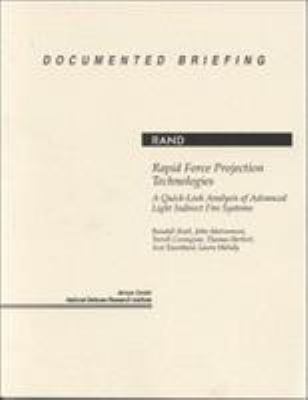
e-Book
|
Rapid force projection technologies : a quick-look analysis of advanced light indirect fire systems
Copies
0 Total copies, 0 Copies are in,
0 Copies are out.
Title
Rapid force projection technologies : a quick-look analysis of advanced light indirect fire systems
Call No
UD493
Digital Link
Authors
Subjects
Language
English
Published
Santa Monica, CA : RAND, 1996.
Publication Desc
1 online resource (xvii, 62 pages) : illustrations.
ISBN
0833024272









